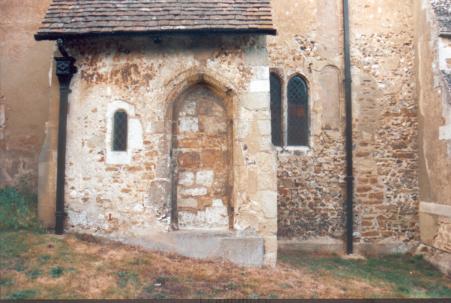What sort of person would choose to be cloistered in the walls of a church, alone, for life? Australian poet Robyn Cadwallader was researching a PhD thesis when she came across the story that inspired her first novel, The Anchoress, the richly told tale of a 13th-century woman who chose to live a circumscribed life in the name of religion. Here, Cadwallader explains how she stumbled upon this remarkable piece of history.
How did I come to write about an anchoress?
It started with a dragon. I had begun research on the life of St. Margaret of Antioch, a virgin martyr who was swallowed by a dragon and bursts from its back, proclaiming herself a hero. The patron saint of women in childbirth, she was one of the most popular saints in medieval England. In the 13th century, this story of female dragon-slaying was bound together with the Ancrene Wisse (Rule for Anchoresses), into a book given to anchoresses.
Anchoress: That was a new word to me; I kept on searching.
Anchoresses were women who chose to be enclosed for life in a stone cell attached to the wall of a church, there to read and pray, committing themselves to Christ in a “living death.” The cells varied in size, but the Ancrene Wisse suggests an anchorhold should have one window to a room for maids and one window to a parlour, where those seeking counsel could come to speak with the anchoress. Both windows would have curtains and the anchoress was told not to look out and not to let others, especially men, look in on her; the only male visitors would be her confessor or the bishop. She would also have a “squint,” a small opening through which she could view the altar to see Mass celebrated, and through which she could receive the consecrated bread.
Anchoresses were women who chose to be enclosed for life in a stone cell attached to the wall of a church, there to read and pray, committing themselves to Christ in a “living death.”
I read all this with fascination and a degree of horror. Sealed in forever? Never to see the world again? How strange these intensely religious women could be, I thought. During the enclosure service, burial rites were read over the anchoress, and some had a grave dug inside the cell to remind them of their living death. Awful, isn’t it? And wrong. That’s what I thought, for a time. Until I began to think about the women themselves, the ones making this choice. Who was I—in my modern, comfortable life, with my opportunities for education and a career—to decide these women were weird or foolish?
The stereotype of the downtrodden medieval woman with no rights or agency is much too simplistic but, for an upper-class woman, marriage or life as a nun were the main paths open to them. It seems understandable that a woman with a strong faith in God, an enquiring mind and an ability to live in seclusion could well make the decision to close herself away.
This living death was the greatest expression of love for God, and anchoresses were honored for their willingness to give up everything in order to suffer with Christ. The status of a village was enhanced where a recluse offered up prayers for her patron and the village, and people often travelled to seek counsel from an anchoress known for her holiness and wisdom.
Yet life in the Middle Ages was intensely physical, and despite the accent on bodily denial and seclusion, an anchoress would be inevitably drawn into that physicality. Attached to the wall of a church, the cell would be located in the middle of the village or town, and at the center of social life. An anchoress would hear church services, festivals, village meetings, people chatting, fighting, making plans; she would hear the fears, pain, loves and gossip of those who came for counsel.
Intrigued, I just had to go to England to investigate anchorholds, or what little remained of them. I found mostly squints and evidence of the cell’s outline in markings on a church wall. I saw squints cut into church walls; I visited Shere, where documents tell of Christine, a recluse who asked to leave her seclusion; I stood in what is believed to be the chapel of an anchoress at Kings Lynn, and though it is now painted and well lit, I tried to imagine what it would be like to stay there within its four dark walls. Forever.
I was disturbed and challenged. Gradually, as I pondered, the questions moved from “these women” to “a woman.” Who was she? Why did she choose enclosure? Was she afraid, excited, certain, doubtful? What about her family? And what would this small dark place be like as a home? In my mind, I went inside the cell. The body she sought to deny could paradoxically become even more present; holy as she may be, she was as human and frail as those she prayed for. My central question was always: What was her experience: bodily, emotionally, spiritually, mentally?
I was fascinated by the idea of her confinement: the moment of enclosure, the door nailed shut behind her; the darkness; the small space, seven paces by nine; the claustrophobia; the threat of madness; her strength; her love of God; her perseverance; her experience of her body, the only physical companion she would have. She was no longer a weird idea; she was a woman. Sarah.
I began to discover the novel’s imaginative space, and I got to know my anchoress and her cell. Through all this, I retained one single commitment: to honor, as best I could, the women who made the choice to be enclosed more than seven centuries ago. And maybe even to learn from this 17-year-old girl who had chosen a life so far away from my own.
Author photo by Alan Cadwallader.








